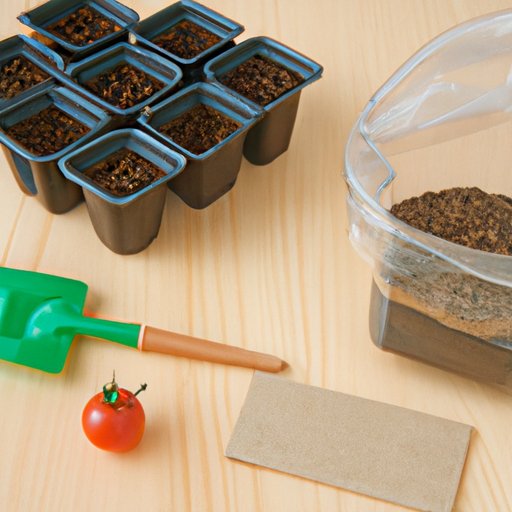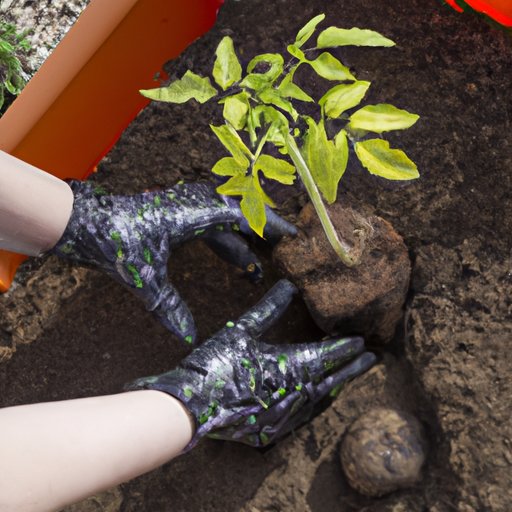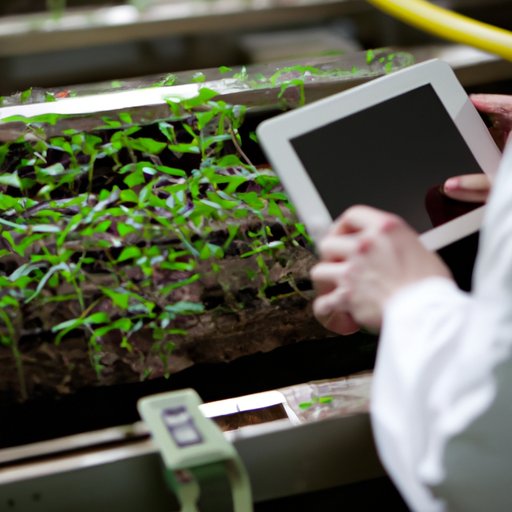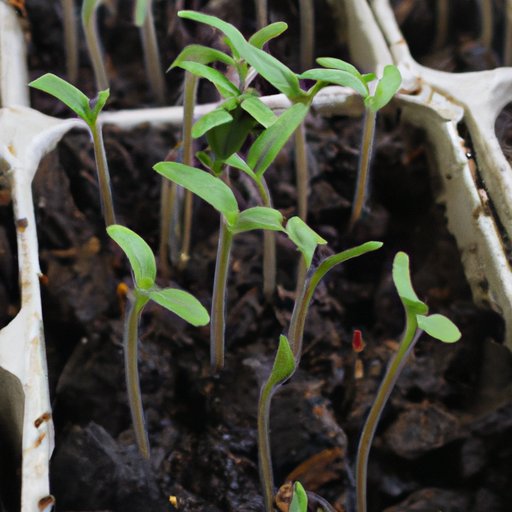Introduction
Starting tomatoes from seed can be a daunting task, but with the right supplies and information it can be done successfully. This article provides information and instructions to help readers start tomatoes from seed. Follow these steps to ensure that your tomato plants get off to the best possible start.

Gather the Supplies Needed to Start Tomatoes from Seed
Before you begin, you will need to gather the necessary supplies. You will need potting soil, tomato seeds, planting containers, a watering can or spray bottle, and a sunny location. If you don’t have potting soil, you can make your own by mixing equal parts of compost and vermiculite or perlite. Tomato seeds can be found at your local garden center or online.
Prepare the Soil for Planting
The next step is to prepare the soil for planting. The best type of soil for starting tomatoes from seed is a light and fluffy potting mix. Make sure to moisten the soil before planting, but avoid over-watering as this can cause the seeds to rot. Once the soil is prepared, fill the planting containers with the soil and give them a good soak.
Sow the Tomato Seeds
Once the soil is ready, it’s time to sow the tomato seeds. The best time to sow tomato seeds is in the spring, when the weather has warmed up and all danger of frost has passed. Place two or three seeds in each container, 1/4 inch deep, and cover lightly with soil. Water the containers thoroughly and keep them moist until the seeds germinate.
Provide Adequate Light and Water
Tomato plants need plenty of light and water to grow. Place the containers in a sunny location and water them regularly, making sure to never let the soil dry out completely. If you live in a hot climate, you may need to water more often. You can also use a spray bottle to mist the plants if they look wilted or dry.
Thin Out Crowded Plants
Once the seedlings have grown to about two inches tall, it’s time to thin out the crowded plants. Remove any weak or spindly seedlings, leaving only the strongest and healthiest plants. This will give the remaining plants more room to grow and will increase their chances of producing a bountiful harvest.

Harden Off the Plants Before Transplanting
Before transplanting the seedlings outdoors, they must first be hardened off. Hardening off is the process of gradually introducing the plants to outdoor conditions. Begin by placing the seedlings in a sheltered spot outside for a few hours a day, gradually increasing the amount of time they spend outside. After a week or so, the seedlings should be ready to be transplanted.

Transplant Carefully and Monitor Growth
When transplanting the seedlings, be very careful not to damage their fragile roots. Dig a hole twice as wide as the root ball and place the seedling in the hole. Gently cover the roots with soil and press down firmly. Water the plants well after transplanting and monitor their growth for any signs of distress. Keep an eye out for pests, diseases, and other problems that may arise.
Conclusion
Starting tomatoes from seed can be a rewarding experience, but it requires some knowledge and preparation. By gathering the right supplies, preparing the soil, sowing the seeds, providing adequate light and water, thinning out crowded plants, hardening off the plants before transplanting, and monitoring the growth, you can successfully start tomatoes from seed. With a little patience and care, you can enjoy a bountiful crop of delicious tomatoes.
(Note: Is this article not meeting your expectations? Do you have knowledge or insights to share? Unlock new opportunities and expand your reach by joining our authors team. Click Registration to join us and share your expertise with our readers.)
